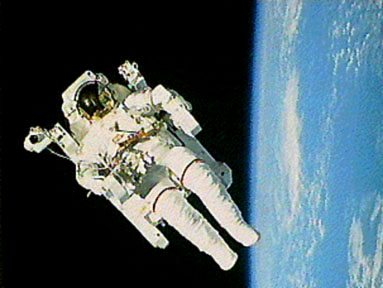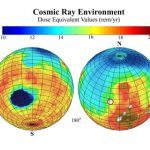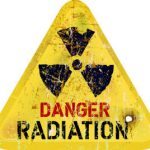Astronauts work and live in space. Because of this, their health has been minutely studied and monitored for over 45 years. Although bone loss and muscular atrophy have been well documented, long term studies of their radiation exposure have led to some surprising findings. Specifically, astronauts seem to get more cataracts.
Visit the NASA Space Radiation Health Project and read their Journals for more details.
Astronaut Longitudinal Heath Studies – Since the start of the space program, astronauts have been subjected to rigorous annual physicals. Over 300 astronauts are in this 40-year study. Here is a quote from the National Academy of Science review of this study, extracted from the Executive Summary:
“Several analyses of the LSAH database have been published in peer-reviewed journals, the earliest a 1993 report on astronaut mortality from 1959 though 1991 that also addressed the hypothesis that astronauts are at increased risk for fatal cancers. Updated and expanded analyses were published in 1998 and 2000; a paper devoted to cataracts in astronauts was published in 2001; and in meetings held early in 2003 the committee was briefed by JSC scientists on more recent analyses of morbidity and mortality. Chapter 2 summarizes the three published studies as well as the briefings, but since the latter built on and were consistent with the earlier reports, only the latest analyses are reported in this summary.
Overall mortality has been significantly higher for the astronaut group in every analysis. Data presented to the committee in January 2003, just prior to the loss of the space shuttle Columbia and its crew of 7, showed 29 deaths among the 312 astronauts in the LSAH database and only 17 deaths among the 912 comparison participants. Accidental deaths, including 8 in spacecraft losses, accounted for 20 of the astronaut deaths (versus only 2 in the comparison group). The groups did not differ significantly in mortality from any other cause.
LSAH data on cataract incidence was combined with individual radiation exposure data from 295 astronauts in a study by Cucinotta and colleagues (Cucinotta et al., 2001; Cucinotta, 2003) which suggested increased incidence and earlier appearance of cataracts in astronauts exposed to higher amounts of space radiation ( > 0.8 Rem or >8 milliSieverts). A follow up study is using digital photography and computer image analysis to better quantify cataract incidence and progression using a group of current and former military pilots as controls.
Because of the known association of some cancers with radiation exposure, surveillance of astronauts for malignancies was planned from the beginning of the LSAH. Craig Fischer briefed the committee on the comparison of cancer incidence among the astronauts (Fischer, 2003), the LSAH comparison participants, and an age- and sex-matched sample of the National Cancer Institutes Surveillance, Epidemiology and End Results (SEER) database. Fourteen cases of cancer (excluding 33 cases of non-melanoma skin cancer) were diagnosed among the 312 astronauts followed from 1959 to the present. This is 59 percent higher than the comparison group per person/year (not statistically significant), but 46 percent lower per person/year than the SEER data (statistically significant).”
So, how much radiation do they get?
The bottom line is that astronauts are not dying by the droves from their brief exposures to space radiation conditions. Here is a comparison of typical, measured, radiation dosages for astronauts in various missions. Compare the dosage numbers to the ‘0.3 rem/year’ (3 milliSeiverts/yr) you get by simply living on the ground in a typical home:
On the ground………………….365 days…………………………..0.30 rem
Mercury 9 …………………………..39 hours…………………………0.27 rem
Gemini 10……………………………70 hours…………………………0.84 rem
Apollo 14…………………………….. 9 days…………………………..1.14 rem
Skylab-4……………………………..84 days……………………………7.81 rem
STS-41C……………………………….7 days……………………………0.69 rem
MIR Station……………………….180 days…………………………17.20 rem
Space Station ……………………90 days……………………………9.00 rem
More From SolarStorms.org:
Submit your review | |







